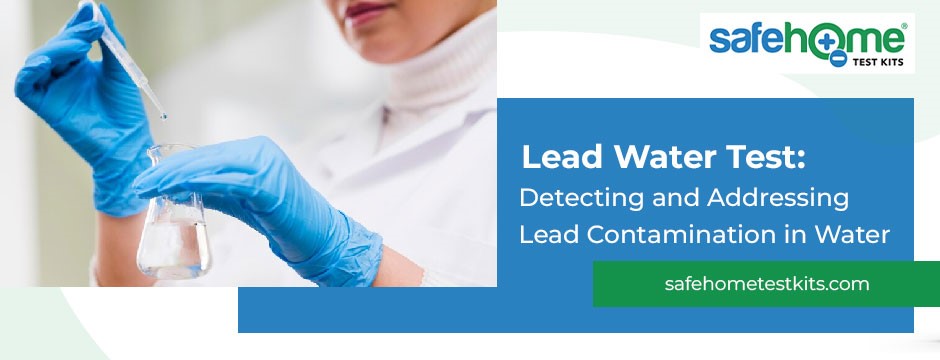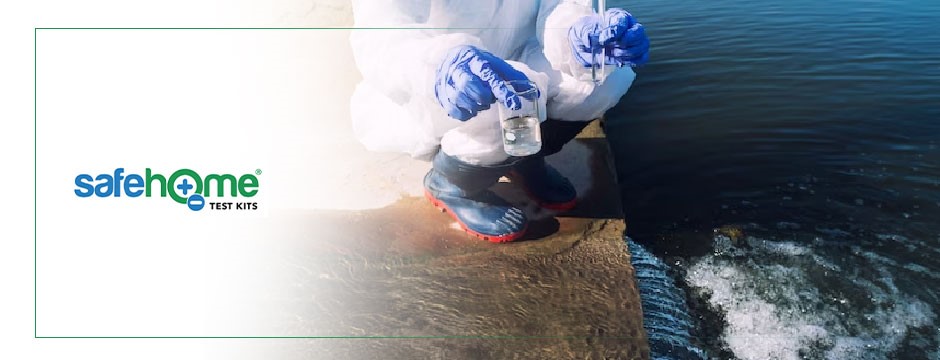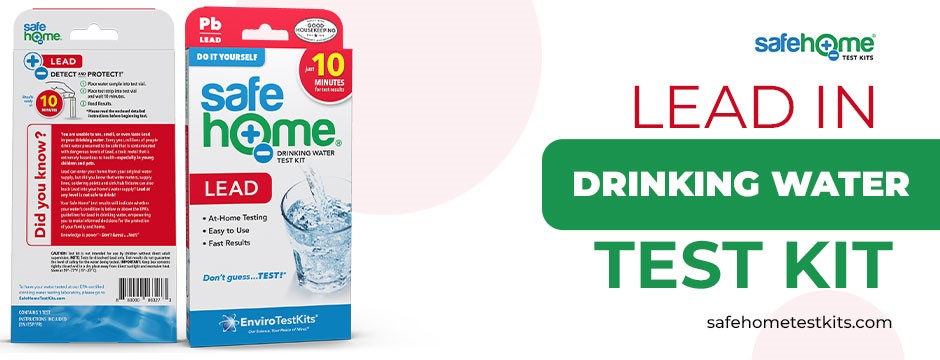Lead Water Test: Detecting and Addressing Lead Contamination in Water

In recent years, concerns about lead contamination in water have gained prominence as communities grapple with the potential health risks associated with this toxic metal. Lead, a naturally occurring element, can find its way into drinking water through various sources, posing a significant threat to public health. This blog aims to shed light on the importance of lead water testing, methods for detection, and effective strategies to address lead contamination in our water supply.
Understanding the Threat:
Lead contamination in water is a serious issue that can have detrimental effects on human health, especially in children and pregnant women. Even low levels of lead exposure can lead to developmental delays, learning disabilities, and other severe health problems. Understanding the sources and pathways of lead contamination is crucial for implementing effective preventive measures.
Common Sources of Lead Contamination:
Old Plumbing Systems:
One of the primary sources of lead in drinking water is outdated plumbing systems, particularly those with lead pipes or lead-based solder. Homes built before the 1980s are more likely to have plumbing components containing lead, putting residents at a higher risk of exposure.
Corrosion:
Over time, deterioration of lead pipes may cause lead particles to leak into the water supply. Factors such as pH levels, water temperature, and the presence of corrosive elements can accelerate the corrosion process, increasing the likelihood of lead leaching into the water.
Service Lines:
The connection between a home and the main water supply line, known as the service line, can also be a source of lead contamination. Older service lines made of lead can introduce lead particles into the water as they travel from the municipal supply to individual households.
Importance of Lead Water Testing:
Regular lead water testing is crucial for identifying and addressing lead contamination in drinking water. Testing helps in assessing the levels of lead present and enables timely intervention to protect public health. Some key reasons for prioritizing lead water testing include:
Health Risks:
Elevated levels of lead in drinking water pose significant health risks, particularly to vulnerable populations such as children and pregnant women. Regular testing helps identify potential issues early on, allowing for prompt corrective measures.
Regulatory Compliance:
Many regulatory bodies and health agencies mandate periodic testing for lead in public water supplies. Compliance with these regulations ensures that water utilities and municipalities are actively working to maintain safe drinking water standards.
Public Awareness:
Conducting lead water tests also plays a crucial role in raising public awareness about water quality issues. Informed communities can take proactive measures to address lead contamination, such as replacing old plumbing or using water filters.

Methods for Lead Detection:
Several methods are employed for lead detection in water, each with its own advantages and limitations. The choice of method depends on factors such as the scale of testing, budget constraints, and the required sensitivity. Common lead detection methods include:
Water Sampling and Laboratory Analysis:
Collecting water samples from various points in the distribution system and analyzing them in a certified laboratory is a standard method for lead detection. This method provides accurate results and is often used for compliance testing.
Field Test Kits:
Field test kits are portable and convenient tools for on-site lead testing. These kits typically use color-changing strips or solutions to indicate the presence of lead in water. While they offer quick results, their accuracy may vary compared to laboratory analysis.
In-Home Testing:
Homeowners can use in-home lead testing kits to check for lead contamination in their drinking water. These kits are user-friendly and provide results within a short timeframe. However, they may not be as accurate as laboratory testing and are best used for preliminary screening.
Addressing Lead Contamination:
Once lead contamination is detected, prompt action is necessary to minimize exposure and protect public health. Addressing lead contamination involves a combination of short-term solutions to provide immediate relief and long-term strategies to prevent future occurrences.
Immediate Actions:
Water Filtration: Installing water filtration systems, especially those designed to remove lead, can provide an immediate solution to reduce lead exposure.
Flushing: Flushing the water system by running cold water for a few minutes before using it for drinking or cooking helps reduce lead concentration, particularly if the water has been stagnant in the pipes.
Infrastructure Replacement:
Lead Pipe Replacement: The most effective long-term solution is the replacement of lead pipes and plumbing components. Water utilities and homeowners should work together to identify and replace lead service lines and plumbing systems.
Public Education:
Awareness Campaigns: Public education campaigns are essential to inform communities about the risks of lead exposure and the steps they can take to protect themselves. This includes information on proper filtration, the importance of flushing, and the potential hazards of old plumbing.
Policy and Regulation:
Stricter Standards: Advocacy for and implementation of stricter water quality standards can help prevent lead contamination. Regular updates to regulations and standards ensure that communities stay ahead of potential threats.

Lead in Drinking Water Test Kit from Safe Home®: Protecting Your Family's Health
Ensure the safety of your drinking water with the Lead in Drinking Water Test Kit from Safe Home® – a revolutionary DIY solution designed for ease of use and unparalleled sensitivity. This user-friendly kit delivers quick and accurate results within just 10 minutes, making it the most sensitive at-home lead water test kit available, detecting levels as low as 3.8 parts per billion (ppb).
We take pride in offering unparalleled sensitivity in lead detection. Our kit can identify even trace amounts of lead, providing you with the peace of mind you deserve when it comes to your family’s health.
Designed for ease of use, our DIY kit yields fast results within 10 minutes. It’s a hassle-free solution that ensures you can swiftly determine if your drinking water is below or above the 3.8 ppb detection level. We stand out as the only brand to have earned the prestigious Good Housekeeping Seal. This accolade is a testament to the quality and effectiveness of our lead water test kit, offering you a reliable tool for safeguarding your water quality.
Your family’s well-being is our top priority. The Safe Home® DIY lead in drinking water test kit provides a simple yet powerful tool to ensure that your drinking water is safe and free from harmful lead contamination.
Don’t compromise when it comes to your family’s health. Take control with the Safe Home’s DIY Lead in Drinking Water Test Kit. Trust the best, and enjoy the peace of mind that comes with knowing your water is lead-free.
Conclusion:
Lead contamination in water is a serious public health concern that requires vigilant monitoring and proactive measures. Regular lead water testing is the cornerstone of a comprehensive strategy to detect and address lead contamination. By understanding the sources, employing effective detection methods, and implementing timely interventions, we can safeguard our communities from the harmful effects of lead exposure. Through a combination of individual actions, community initiatives, and policy changes, we can work towards ensuring that everyone has access to clean and lead-free drinking water. Remember, the key to a healthier future lies in our commitment to water quality and the well-being of our communities.


